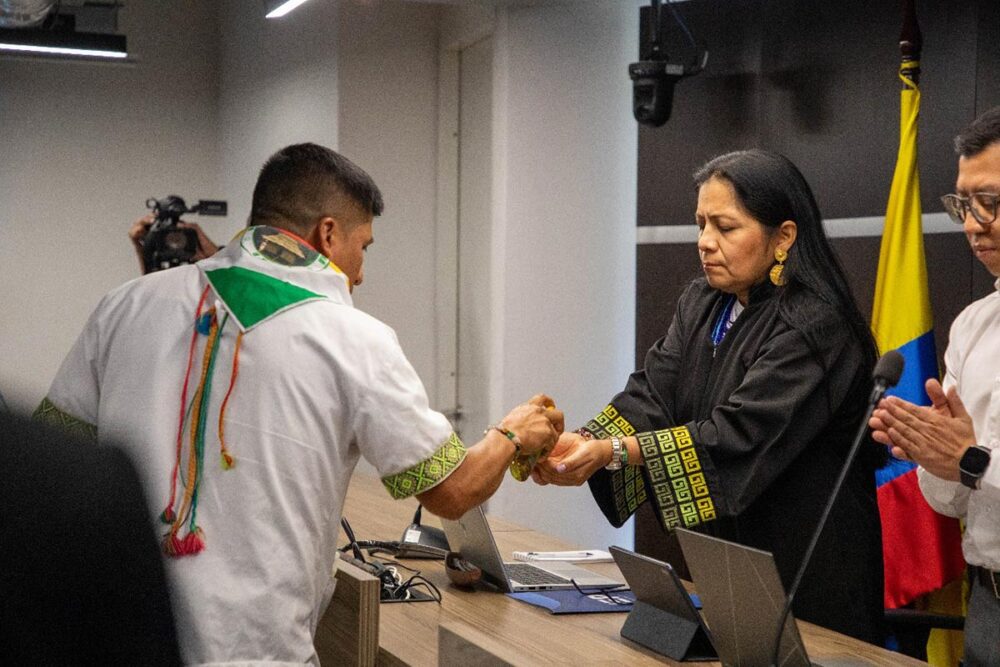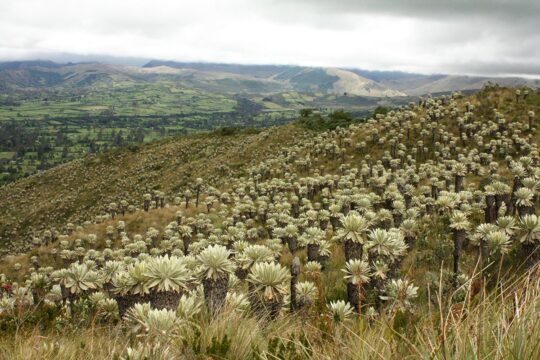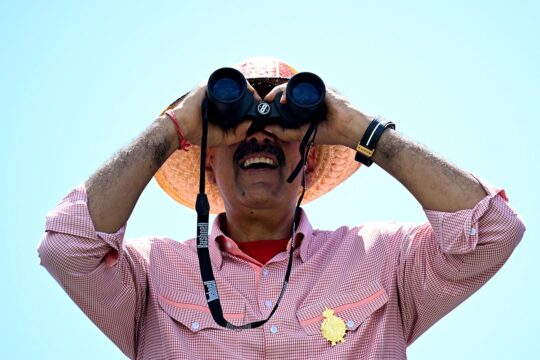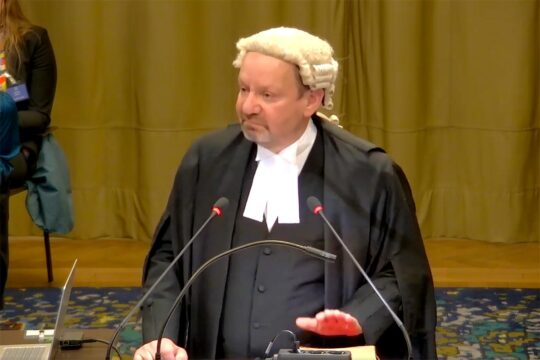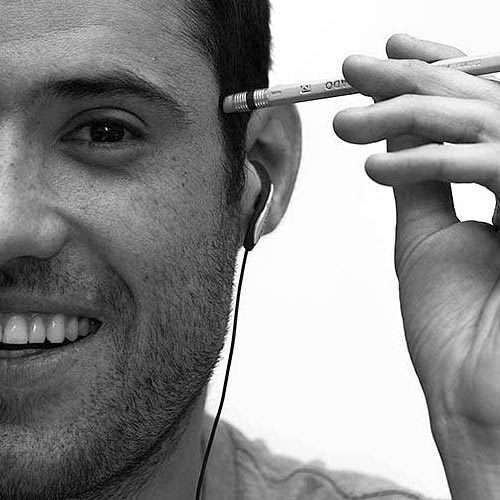During 2023, Colombia's Special Jurisdiction for Peace (JEP) presented its first two indictments in macro cases where it chose not to focus on emblematic crimes, but on specific regions of the country. With them, the special tribunal stemming from the 2016 peace agreement put the spotlight for the first time on how ethnic minorities, both indigenous and Afro-descendants, were especially brutalised over a half-century armed conflict in Colombia.
One of those decisions, unveiled in July, was momentous because it reconstructed the massive victimization suffered by the Awá, perhaps the most targeted of the country's 115 indigenous peoples. The crimes that the former Revolutionary Armed Forces of Colombia (FARC) committed against them, the JEP argued, "were of such gravity that they compromised their existence and physical and cultural survival". For these acts, the JEP accused 15 former FARC regional commanders in Nariño, in the southwestern corner of the country, as most responsible for committing 16 war crimes and crimes against humanity, including homicide, forced disappearance, rape, recruitment of minors and landmine use. Among them was a first repeat offender, Pablo Catatumbo, who had already been charged with kidnapping.
"Regardless of the fact that the members of the extinct FARC-EP did not have as a written policy to discriminate against ethnic peoples," justice Belkis Izquierdo wrote in her decision, "the policy of territorial and social control implemented in these places constituted an attack on their existence (....) that affected them in a serious, differentiated and disproportionate manner."
Unfortunately, a spate of killings and attacks have followed the Awá over the past year and a half, continuing to jeopardise their survival. This wave of violence underscores the limitations of the JEP and more broadly transitional justice, which seek justice for the atrocities of the recent past, but remain impotent in the face of today's disputes between illegal armed groups over Awá territory and the persistent violence against them.
A risk of “physical, cultural and spiritual extermination”
Throughout 1,046 pages, the JEP documented scores of crimes committed by the FARC over a quarter of a century against the Awá, a group of 44,000 indigenous people living in 55 reservations where the Andes mountains descend to the Pacific Ocean, near the border with Ecuador. From murders and forced disappearances to the recruitment of minors, sexual violence and the indiscriminate use of landmines, the guerrillas' cruelty towards them was such that, according to the indictment, "they took them to the risk of physical, cultural and spiritual extermination".
The numbers in the indictment are stupefying: between 1990 and 2016, FARC rebels killed 185 Awá, including 17 children and 11 elderly people. Between 2005 and 2007 alone they caused the massive displacement of 4200 indigenous people and then, between 2012 and 2013, of another 5000. All this in an ethnic group that, as the accusation underscores, has poverty levels of 83 percent.
Beyond the numbers, the accounts of the viciousness with which they were attacked inside their reservations, collectively owned territories that rebels entered without asking for permission and where they searched for their victims with list in hand, are chilling. They often stuffed their victims' bellies with stones and threw their bodies into rivers, forbidding or preventing their relatives from searching for them.
Five indigenous people killed in 2003 were tortured to the point that, in the tribunal's words, they had "their faces savagely disfigured with a bladed weapon". The death of teenager José Melandro Pai in 2012, after stepping on a landmine planted 500 meters from his school, caused the displacement of 420 families in the Inda Sabaleta reservation. One woman, referred to as 'victim 33', was routinely raped every week for three months. And in one of the most emblematic massacres for the Awá, guerrillas from the Mariscal Sucre mobile column murdered 11 persons in the Tortugaña Telembí reservation in 2009. Among them were two pregnant women, whose wombs and genitals they slit, in what the JEP described as an example of "cruelty against women's bodies". Five of those victims are still missing today, including the two babies baptised Ñambí and Telembí after local rivers and whose names the Awá adopted recently as the moniker for their strategy of self-protection and cultural resistance.
Murdering leaders
Several episodes show how the same families were subjected to a continuum of abuses. When a 15-year-old boy who had been recruited refused to attack his family and ran away, the FARC went to his house in Inda Sabaleta to rape seven women, including two girls aged 12 and 13. Another family, who refused to accept a rebel's love affair with their 13-year-old daughter, had two other children recruited and were all then displaced.
Many of FARC's targets were respected Awá leaders. In 2004, they assassinated Efrén Pascal, governor of the Cuasbí Yaslambí reservation, denying responsibility for years and never revealing his whereabouts. Two years later, the same fate befell the former governor of the Magüí reservation, José Antonio Valenzuela, and his brother Jhon Jairo, whose mother was later threatened to stop looking for them and forcibly driven from her home. They went so far as to veto the Awás from wearing t-shirts from Unipa, one of the organizations that represent them politically at the national level. Their goal, the tribunal stated, was to "annul or co-opt the autonomy, self-government and organizational process of the Awá people."
An "intercultural dialogue" pilot
Interestingly, the indictment makes a visible effort to incorporate the vision of the Awá and narrate the damages from their logic - something partially explained by the fact that the case was led by justice Belkis Izquierdo, herself an indigenous Arhuaca and the first indigenous woman to reach a high court in Colombia.
For example, the JEP argued, the FARC's prohibition on recovering bodies has an additional aggravating factor, given the Awá custom of burying their ombilical cords at birth in their home as a way of "sowing for life." "If the Awá are not integrated into their territory, an imbalance is generated," says the judicial decision, which was one of the first pilots of the "horizontal intercultural dialogue" that the peace tribunal set out to weave with ethnic peoples' own legal systems.
A key part of that effort was a project in which seven indigenous and Afro leaders with experience in environmental issues and knowledge of the territory, called 'intercultural experts' by the JEP and nominated by their own organizations, worked with two environmental experts to gather evidence of social and ecological damage.
The JEP also personally notified 11 indigenous and Afro-descendant territories of the contents of the indictment, a novel process that they completed in December. But it also means that - in one of the possible difficulties of this approach - the 15 defendants will have at least until February to decide whether to accept the charges (almost four times longer than other defendants).
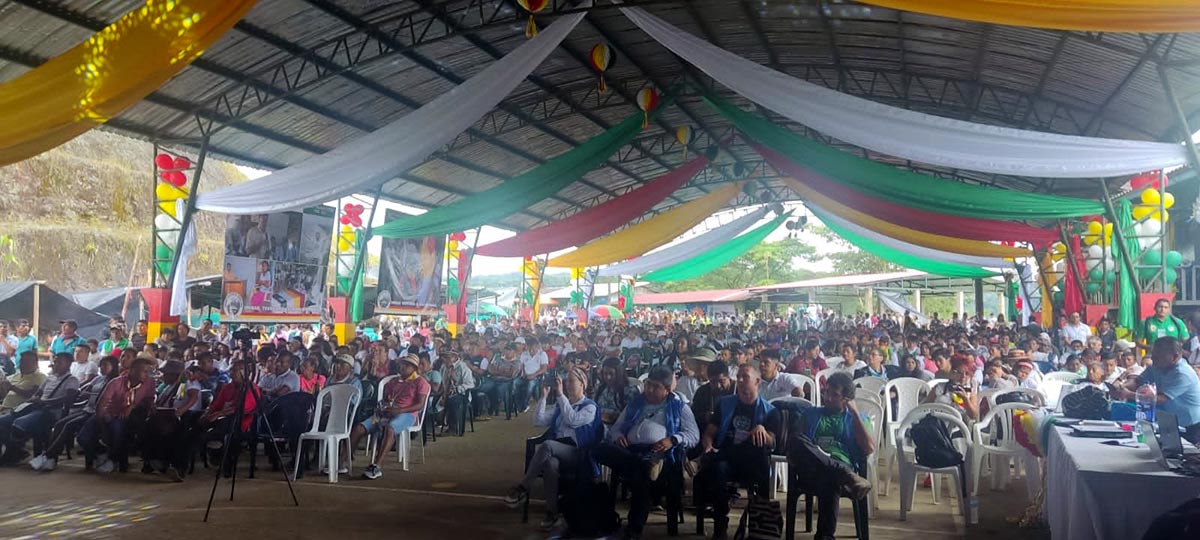
Crimes against the "big house”
For the JEP, the damages didn’t only occur against the Awá, but also against the territory they call 'katsa su' - or "big house" in the Awapit language - which the court certified as a victim in the macro case.
According to the decision, FARC's attacks on the Trans-Andean Pipeline and its promotion of illegal gold mining caused serious ecological and social consequences in one of Colombia's most biodiverse areas. Oil spills contaminated hundreds of kilometers of rivers and estuaries, affecting the life cycles of the tarpons and threadfins that the Awá fish and scaring away other animals they hunt. Some reservations, like Palmar Imbi, were left without drinking water for two months. There was also an increase in indigenous suicides - or 'poisonings' in the Awá conception - due to the ingestion of chemicals used in cocaine processing, another activity that financed guerrillas.
Some of these impacts are relayed by the JEP from the Awá cosmovision. For example, oil stains led to a loss in medicinal plants, especially aquatic plants, such as the pichanga used in harmonization ceremonies or the chaguare that cures the bad wind disease, as well as the chutún ritual. River snails, used to treat stomach pains, and iguanas, whose grease relieves birth pain, have also decreased. This contamination also caused - the JEP points out - that the spirit they call kuanka, who lives in streams, abandoned them and that they lost its protection. And it caused the disappearance of sacred sites, such as a tunnel where the elders kept community documents thought to be land deeds.
These losses, the JEP concluded, generated "disharmony" for the Awá and meant that "they were weakened in their inseparable link with the territory, which nourishes them and determines their way of life”. Hence, the crimes it charged the 15 former FARC rebels included the war crimes of destruction of nature as a civilian asset and destruction of the territory as a cultural asset and place of worship.
"What happened there responded to a policy"
For the JEP, the crimes committed by the FARC against the Awá, as well as against Afro-descendants and the Eperara Siapidaara indigenous people in that corner of Nariño, were part of their policy of social and territorial control. With this strategy they sought, among other objectives, to dominate strategic corridors, finance and swell their ranks, co-opt social organizations and punish those who didn’t accept their authority. "What happened there responded to a policy, at times expressly ordered, at others promoted and, in other cases, tacitly authorized by commanders," it argued.
The tribunal arrived at this conclusion by methodically reconstructing - citing FARC plans, manuals and leaflets - how each of the six patterns of macro-criminality it identified originated in orders from the rebel group's leadership, which were then implemented in Nariño by the leaders of its Alfonso Cano Western Bloc and three local structures under its command.
It was a strategy that was not only expressed through violent acts, but also through language. The guerrillas used, according to the JEP, "a stereotyped discourse of discrimination and racism" that included unfounded accusations of the Awá and their leaders as violent, drunks and corrupt, traits that allowed them to justify their imposition of "order" and obligatory norms of "coexistence”. As one of the accused, Diego Alberto Gonzalez "El Pollo", admitted, "we cannot let people do or be what they want". For this reason, the tribunal charged them with the war crime of persecution.
All of this led the JEP to argue that the FARC sought the extermination of the Awá. "The survival of these peoples cannot be guaranteed with the mere physical existence of its members individually considered, but it is necessary that they can continue as a people, for which they not only need to be alive physically, but to remain in their territories and preserve their cosmovision," it argued.
A new wave of violence across borders
Just nine days after the JEP unveiled its accusation against the FARC, a new act of violence against members of the Awá people occurred. On July 22, a dissident structure of that guerrilla group that decided not to lay down its weapons with the peace process assassinated community leader Camilo Guanga, whom they had already held a year earlier, in the Piguambí Palangala reservation. A week later, armed men killed three indigenous people, including two teenagers, in the Saude Wiway reservation.
These are just two of the cases in a long list of a fateful 2023 for the Awá. In January, 6-year-old indigenous guard José Taicus Pascal was gunned down in the Alto Abi reservation. A month later, youngster Alejandro Taicus was murdered in the Gran Rosario reservation and, shortly after, the same occurred to guard Marlon Hernando García in El Gran Sábalo. In the same territory, 20-year-old Carlos Pai was killed in August while unsuccessfully pleading in Awapit with members of an armed group he encountered in the jungle. A month later, Anarceli Preciado was murdered in Hojal La Turbia.
The situation has deteriorated so much that in March the Ombudsman's Offices of Colombia and Ecuador launched, for the first time, a binational early warning that over a six-month period the confinement and displacement of 10,000 indigenous Awás had been reported. In the last four years, attacks have tripled and already equal the highest peaks of the years covered by the JEP investigation, according to the human rights observatory of their organization Unipa. This security risk, which had already led to cautionary measures from the Inter-American Human Rights System in 2021, was what led the court to anonymize the names of all the indigenous who testified, dubbing them simply as 'victim' and assigning them a number.
This is not the first time that a legal achievement has been followed by a flurry of violence. Just nine days after the Constitutional Court determined in 2009 - in a ruling considered emblematic - that the Awá and 29 other indigenous peoples were at "high risk of cultural or physical extermination" due to the armed conflict, the infamous Tortugaña Telembí massacre occurred.
"The boldest attempts at legal pluralism in Colombia"
This wave of attacks against the Awá, just when they were working with the JEP to document FARC's crimes against them and when they finally glimpsed the justice that had eluded them, demonstrates the limits of transitional justice in the face of present-day violence. It is hindered by a time constraint on the one hand, since the tribunal can investigate acts committed up to 2016, but also by its focus on certain perpetrators, since it can only focus on FARC and state agents, but not on groups dedicated to organized crime or drug trafficking - two aspects of its mandate meant to give the JEP a bigger chance of delivering justice.
"Ours is a transitional justice scenario where the armed conflict continues, where a guerrilla has demobilized but we are far from the end of war. This, however, does not detract from the sense and value of the paths of justice that have been advanced, which are the boldest attempts at legal pluralism that we’ve seen in Colombia," says lawyer and historian Gloria Lopera, who has studied the legal history of indigenous territories. The result of this intercultural work is one of the proposals already in place for a restorative sanction, which contemplates the reconstruction by former FARC guerrillas - including the accused but also others - of a house of wisdom and the restoration of the ecosystems in Tortugaña Telembí.
For Lopera, these advances are the result of the diverse composition of the JEP - where there are four indigenous and four Afro justices - and its decision to take intercultural dialogue seriously. "They don't come out of nowhere," she says.


